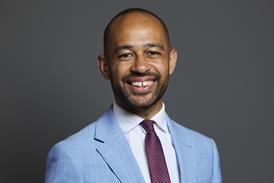Firms need high-performing lawyers if they are to stay competitive, but they can be extremely difficult to manage. Meena Heath and Nigel McEwen look at how to put the key players on the right track
Every law firm has its stars - they are often the key to its success. They are driven, and often controlling, high-billing geniuses. But when their star is in the ascendant, they can be difficult to manage.
Typically, high performers share a number of key characteristics:
l Fast thought processes;
l Strong opinions;
l A focus on flaws in other people's ideas or arguments;
l An analytical (unemotional) cognitive style;
l High performance expectations for themselves and others;
l A high level of discipline; and
l Limited time and attention span.
High performers are drawn to the practice of law. They are attracted by the win/lose aspects of legal practice (and, of course, they must win). Consequently, there are more high performers in this sector than in most other professions and they are welcome as they generate big fees.
Every business law firm looks for the rainmaker, the one with the £1 million-plus following; they seek out these high performers to join their firms and encourage others to emulate them.
What are the secrets of high performers? Research across a wide number of areas has revealed a basic recurring equation: high performance equals potential minus interference .
High performers are less easily distracted than others, as they condition themselves to focus on key processes. Alternatively, they learn to recognise more instinctively when they are being distracted, so that they can re-direct their thoughts to the matter in hand.
High performers concentrate on the vital processes that will lead to preferred outcomes rather than the outcomes themselves. Winning or losing is seen as the end result and the high performer believes that his own performance determines the outcome.
In the legal profession, high performers attract clients, who in turn admire their confident and sometimes aggressive approach. They are often respected by their colleagues for their drive, energy and enthusiasm, and are loved by managing partners for their urge to bill more than anyone else. While some of them are 'natural successes', many latent high performers can attain greater levels of achievement with guidance and direction.
Unfortunately, high performers can also cause tension and upset people. They are often judgmental of others and can have a negative effect on team working. Their focus on their own performance often leaves them blinkered or overly concerned about competition from fellow workers.
As up-and-coming stars, they may disregard the views of their co-workers, and once they make partner, they often fail to appreciate and motivate their own team or support their partners. Colleagues can become intimidated and the growth of new ideas is often prevented. Concentrating on completing the task is vital to the high performer and the feelings of others are often dismissed in a high-handed manner.
Of course, these are all traits that ultimately inhibit the high performer from achieving their full potential.
Frequently the strengths of the high performer become overplayed and become flaws; however, the benefits high performers bring are such that investing in harnessing their full potential is worth the time and resources.
So how should law firms respond to the high performers' needs? A training course is often seen as an appropriate reaction - but does this fit the bill? More management training without behavioural analysis or an understanding of the effects of their current approach often pushes the high performer further along the same track. Is coaching a more effective option?
There are a number of key differences between coaching and training:
l The training agenda is set by the trainer: in coaching, the individual sets the agenda, which can be flexible and progress at a relevant speed.
l Change comes from outside in training, whereas coaching works with the individual to clarify values and explore their learning needs.
l Training rarely involves feedback, but the coaching process involves constant feedback and continual learning.
l Coaching is about lasting behavioural change - training provides new information but is less likely to engender major shifts in thinking and action.
The major objective of a coaching programme is to build on the high performer's strengths, while addressing negative traits and using techniques to help develop a more positive focus.
The starting point is frequently the 360-degree appraisal, which provides a wealth of data detailing the impact of the individual's behaviour on others. With input from their coach, the high performer will be able to assess the nature of that impact.
The high performer will find it hard to use their commanding ability to argue with the (anonymous) reactions and comments. The coach can assist the high performer to utilise the feedback to build better self-awareness.
The appraisal will almost invariably highlight difficulties in listening. For example, the high performer may spend too long in destructive debate trying to persuade other team members to adopt their view and demonstrating a flair for spotting weaknesses in others' arguments. They also often enlist the support of colleagues to highlight the inadequacy of another's performance.
It is essential to know that there are no right or wrong answers and the high performer is able to develop an understanding that his own opinion is valid and valued, and others have equally valid ideas.
An insightful coach may seek to build upon the 360-degree exercise by focusing on immediate results: the high performer will be as impatient in the programme as they are elsewhere.
The coach needs to speak in high- performance language, giving feedback in a clear (and measurable) way. The high performer's attention will constantly need to be engaged and their curiosity should be provoked. The coach must also balance positive reinforcement with critical feedback.
The objective is to retain the individual's high performance motivation and contribution and to marry it with the organisational goals. Successful alignment can lead to huge gains for all.
Meena Heath and Nigel McEwen are executive coaches with Genesis Coordination
Charity Explorer provides a reputable reference tool for solicitors, will-writers and their clients who want to leave a legacy or charitable gift.
Visit Charity Explorer
Whether you are looking for legal expert witnesses, legal training/CPD providers, international law firms, administration of estates, legal software suppliers, barristers chambers or any other general legal service, the Legal Services Directory will provide a suitable option.
Visit Legal Services Directory

























No comments yet